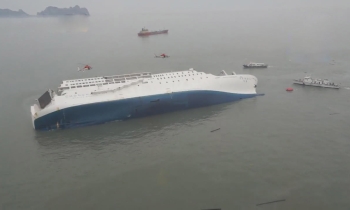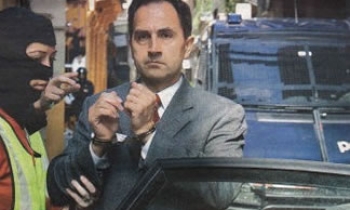The American Magazine Conference, which concluded yesterday in Puerto Rico, featured speaker after speaker presenting a positive and optimistic outlook for magazines centered on a new embrace of electronic media technologies. Meredith's Jack Griffin announced a new video-on-demand relationship between Comcast and American Baby magazine; Martha Stewart Living Omnimedia CEO Susan Lyne, joined onstage by Martha herself, announced the company's "single biggest goal for 2006 will be to launch a new major web presence;" and CondeNet's Sarah Chubb announced that three new websites are in the pipeline to join the company's Style.com, Men.Style.com, Epicurious.com and Concierge.com. Sirius Radio's Mel Karmazin touted his company's growing content initiatives with magazines Maxim, Hearst's Cosmopolitan, and Martha Stewart Living.
As recently as last year, the word "digital" was still an afterthought when magazine publishers gathered. The industry was still plagued, in the words of Time Warner's Don Logan, "by boo bears who are convinced the magazine industry has been pushed to the brink." The fear, based on experience, that magazine brands cannot be extended to television programming has all but dissipated as publishers not only embrace new media technologies but realize their brands are suddenly highly prized for extension into emerging media. Equally compelling for magazines are marketers' increasing focus on return-on-investment and return-on-objectives measurement, the shift from exposure to engagement and experience (as defined by Starcom's Esther Franklin), and marketers' growing interest in the partnership value of powerful media brands and consumer franchises.
Magazine publishers, who have been stomped on and ground down for the past decade by advertisers' demands for cost reductions, by increased competition, rising postage and production costs, and by a sense of inevitable demise, demonstrated a renewed sense of confidence and assurance in both presentations and behind-the-scenes conversations.
Magazine editors were challenged by several industry leaders to expand their traditional print-only sensibilities. Veteran adman George Lois implored editors and art directors to launch a new era of radical content and design that truly differentiates them and connects with audiences.
The magazine industry has reveled for years in its own sense of competence, quality, editorial integrity and competitive superiority while its foundation of advertising and reader value slowly and not-so-invisibly rotted away. But industry-watchers, competitors, and potential partners should take note of the quiet sea change that occurred this week in the humid rainforests of Puerto Rico. The magazine industry has awoken and is well-positioned to recapture its long-lost leadership of the media world.
Companies with media brands that are tailor-made for multi-platform media extensions like TV Guide, ESPN, Meredith, Hearst, Hachette, Martha Stewart Living Omnimedia, Playboy, Forbes, Rodale, and Time Warner find themselves in the enviable position of being eagerly sought out by television, online, mobile and emerging media providers.
It seems inevitable that television and online industry leaders like Comcast's Brian Roberts, Yahoo's Terry Semel, Microsoft's Steve Ballmer, Cox's Jim Robbins, Viacom's Tom Freston, Disney ABC's Bob Iger and Anne Sweeney, News Corp.'s Rupert Murdoch and Chase Carey, XM's Hugh Panero and others will begin making pilgrimages to the magazine industry's annual conference. And rather than presenting themselves as conquering super-powers basking in the glow of their dominance, they will find themselves in the unfamiliar role of suitors seeking the blessing of a redeemed and rejuvenated flock of powerful brands that have stayed the course and ultimately found themselves in a position to set terms of alliance and engagement.
Lest I sound overly enthusiastic and positive, the challenges for the magazine industry remain enormous. An overly fragmented marketplace, brand confusion, measurement concerns, circulation scandals, restrictive guidelines that force the industry to comply with anti-competitive standards of editorial/advertising separation, rising costs, regulatory issues, corporate profitability demands, heavy investment costs, the need to learn new media and marketplaces, and marketers' continuing love affair with new media opportunities cannot be overlooked.
But after years of self-congratulatory back-slapping and a refusal to acknowledge the inevitable, attendees and speakers at the AMC, for the first time in recent memory, return to their offices with confidence there is a silver lining in the expansion of new media, and that the winds of fortune may be turning in their direction.









